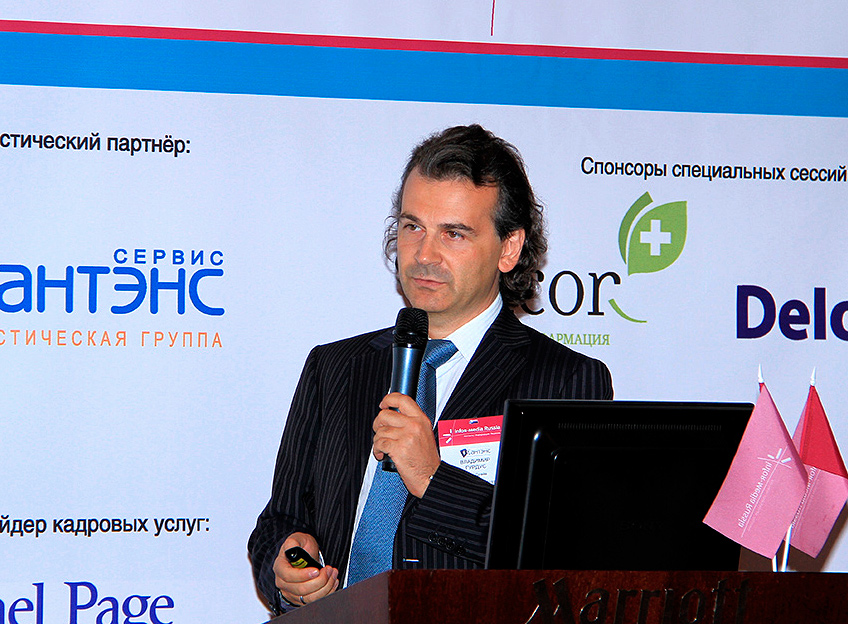
Special autumn session for the pharmaceutical business leaders
Print 01 October 2012

What's going on in the pharmaceutical business: Leaders in search of efficiency
From speech at IV Special autumn session WHAT'S GOING ON IN THE PHARMACEUTICAL MARKET: LEADERS IN SEARCH OF EFFICIENCY.
"...What are the sources of potential funding for innovative life sciences developments in Russia today?
. The most common funding mechanism today are the pools of own-resource investment capex inside large pharmaceutical companies where, typically, a dedicated corporate discovery, R&D and product-lifecycle-optimization function is continuously developing both new products as well as incremental differentiating features to existing products in order to prolong their patent protection period or otherwise create structural differentiation to command premium revenues. Another, rapidly growing funding mechanism is the case where, outside the purview of the major pharmaceutical companies, small groups of independent researchers discover a molecule or compound with potential therapeutic merit, but lack the funds and business expertise to drive this compound all the way from a purely scientific concept to a successfully approved and marketed product with clear, market-relevant therapeutic differentiation and/or cost-saving potential, a process which may take from 5 to 15 years. Life sciences focused venture capital firms can provide the key funding and market expertise catalysts to enable these concepts to become reality. In other words, for Russian life sciences concepts to become commercial successes, a network of world-class venture investors in life sciences is needed here in Russia in order to bridge the chasms of money, time and expertise between scientific research and commercialization.
So, based on the above, if you are a scientific researcher with an idea or concept you believe has arguable breakthrough potential, who can you approach for funding and support in Russia today? OK, you have the Skolkovo Foundation, Rusnano, RVC and other potential grant funding sources. However, based on our experience, this is far from sufficient to proactively facilitate the development of Russian life sciences. The facts speak for themselves
By way of example, the cumulative value of venture capital investments in Life Sciences in the USA, if summed up, comfortably supersede the accumulated venture investments in sectors such as ICT. . If we count by the number of transactions the life sciences sector in the USarea also leads most others
Here in Russia, however, , according to the Russian Association of Venture Investors, the situation is diametrically opposed to what we see in the US, in other words life science venture investments are minimal here.The question then becomes, faced with these statistics, how the investment climate can be improved in Russia. What structural or other factors continue to impede significant venture investments in life sciences in Russia to a level at least commensurate with the growth, scale and scope of Russia’s economy and accumulated wealth? What measures need to be undertaken in order to remove whatever obstacles exist? I firmly believe that the RMI venture investment project undertaken by Rusnano and Domain Associates, by providing a world-class example of life sciences venture investments based in Russia, goes some way to addressing these issues.
All Portfolio
MEDIA CENTER
-
The RMI group has completed sertain projects
The RMI Group has exited from the capital of portfolio companies:
Marinus Pharmaceuticals, Inc.,
Syndax Pharmaceuticals, Inc.,
Atea Pharmaceuticals, Inc.

